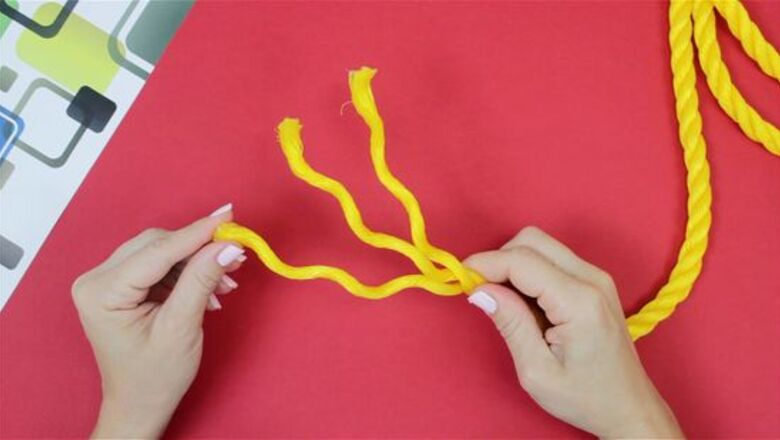
views
Eye Splice
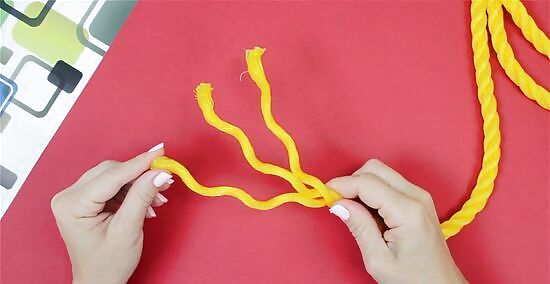
Separate your rope into 3 strands. Start by taking the end of 1 strand and unraveling it about 5 revolutions down the rope—take the end of a strand and rotate it around the others 5 full times. You may need to cut the end of your rope free to separate it, if it’s bound by adhesive or melted together. If you’re using a rope with more than 3 strands, unravel them, then gather them as evenly as possible into 3 groups, making essentially a 3-strand rope. Eye splices are useful for making a stable loop in a line of rope. This can be useful for towing, pulling, hanging, or pulleys.

Seal the ends and bases of your strands with tape. Wrap electrical tape (or another sturdy kind of tape) once or twice around the end of each strand, as well as where the strands meet. This prevents your rope from fraying while working on it, and from unraveling any further. Or, seal the ends of synthetic rope by singing the fibers together with a lighter. Hold the flame to the very end of each strand for a few seconds until the fibers fuse together. Always exercise caution when working with fire. If your rope has soaked up a flammable substance, it could catch fire easily. Or, use a rope-safe glue to attach the end strands of a natural fiber rope together to prevent further fraying.

Size the loop by laying the base of the strands over the rope. Bring the point of the rope where the unraveled strands meet back up to the main body of the rope where you want your splice tied. This establishes the size of your loop. Mark this point on the rope with a marker to help you remember where it is. Keep in mind what you want to use the spliced rope for—a big loop may work well for some jobs, but may not be ideal for others.
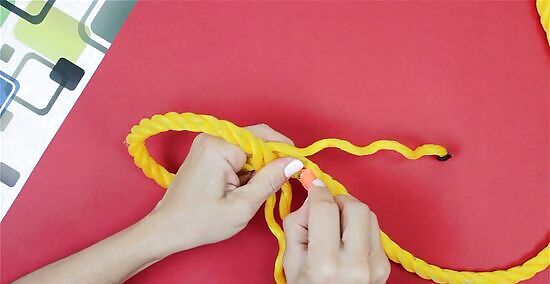
Loosen the base of your loop and feed in your first strand. Loosen the point on the body of your rope that’ll form the base of the loop by twisting it against the rotation of the rope. Then, feed 1 end strand under and through the loosened, untwisted strand nearest you, and pull the end strand through. As you pull the end strand through, position the 2 other end strands so that they “straddle” or fall on either side of the rope.
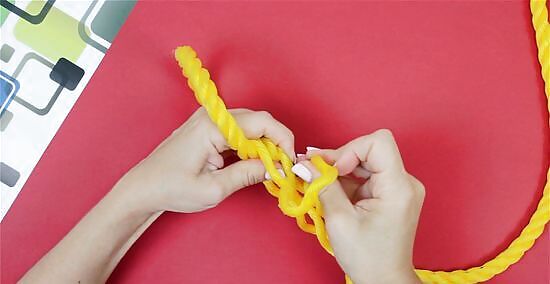
Tuck your second end strand over, under, and through the rope’s body. Take the next end strand that’s clockwise around the end of the rope. Position it so that it travels over the loosened body strand through which you fed the first end strand, then feed it under and through the very next loosened strand.

Tuck the last end strand through the last body strand. Now take the last end strand and feed it through the third loosened body strand—the one which you haven’t yet pulled a strand through. Pull it all the way through, just like the other 2 end strands. Make sure all 3 end strands are pulled all the way through, so that the base of the loosened strands are firmly up against the body of the rope.

Continue to weave the end strands up through the rope’s body. Take the first strand you tucked and move it over the next strand on the body of the rope, then tuck it under and through the strand after that. Do the same with the other 2 end strands, repeating your way around the rope. Keep working until all 3 end strands are completely tucked into the body of the rope, weaving them over and under one at a time. As you work, continue to twist the rope to loosen its body, and pull each strand all the way through so that the strands are sturdy and secure. Weave the ends until each has been tucked into the body at least 5 times, or until you cannot tuck them any further.
Back Splice

Unravel the last 2–3 inches (5.1–7.6 cm) of your rope. Untwist the very end of your rope until you have 3 separate strands that are each about 2–3 inches (5.1–7.6 cm) long. Cut the end of your rope free to separate it if it’s held together with adhesive or melted together. Thicker ropes are easier to back splice if you unravel an additional 2–3 inches (5.1–7.6 cm). If you’re using a rope with more than 3 strands, unravel them, then gather them as evenly as possible into 3 groups, making essentially a 3-strand rope. A back splice is especially useful for preventing a rope that has become unraveled from fraying. This splice will securely keep the rope together.
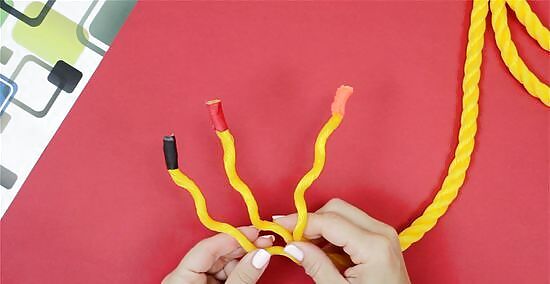
Seal the ends of your strands with tape. Wrap sturdy tape, like electrical tape, once or twice around the end of each strand of the rope. This prevents your rope from fraying while working on it. Or, seal the ends of synthetic rope by singing the fibers together with a lighter. Hold the flame to the very end of each strand for a few seconds until the fibers fuse together. Pinch the base of the strands with your fingers to keep them from unraveling further.
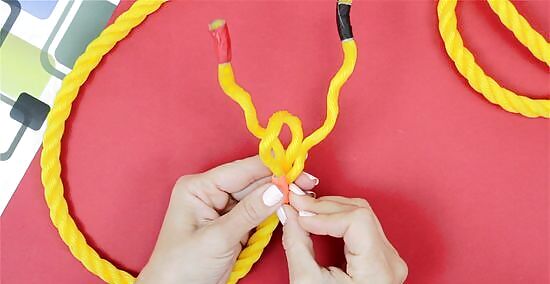
Fold the center strand toward you. Hold the end of the rope so that one strand is distinctly in the center. Take the end of this center strand and fold the tip toward you, between the other 2 strands, and hold the tip at the base of the strands with your finger to form a loop. This is the beginning of a crown knot, which will form the base for your end splice.
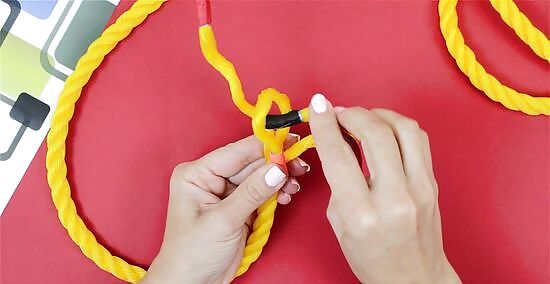
Feed the right strand through the middle loop. Take the rightmost strand and pass it through the center loop, keeping all the strands loose. Don’t feed the right strand all the way through the center loop; keep it loose enough so that it forms its own loop.
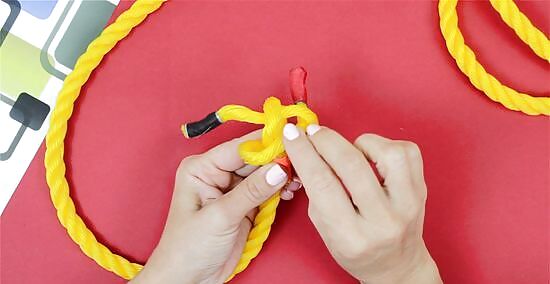
Thread your remaining end strand through the second loop. Take your final strand on the left and pass it over your first loop and through your second loop. The current shape of your end strands will roughly resemble a propeller or pinwheel.
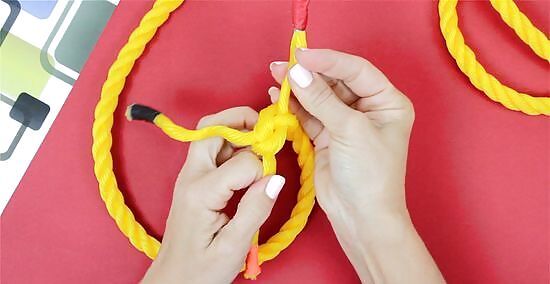
Draw the strings together to tighten the crown knot. Pull the ends of each strand with steady pressure to make a secure “crown knot” at the end of your rope. With coarse ropes, you may need to use your fingers to encourage the rope into place. It sometimes helps to pinch the bottom of the crown knot and pull it tightly.
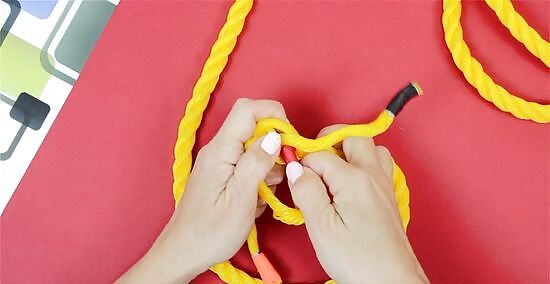
Untwist the rope to loosen it and feed an end through. Untwist the rope to loosen the portion just beneath the crown knot. Then take any one of your end strands and pass it over the nearest strand in the body of the rope, then under and through the next body strand. After, pull the end of the strand through the loosened strands until no slack remains.
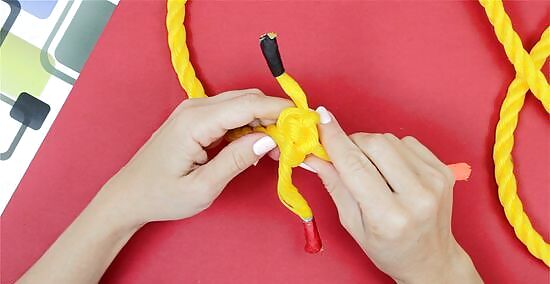
Weave your next strand over and under the body strands. Take the strand to the right of the one you just tucked. Bring the end of that strand over the body strand under which you tucked the first. Then, tuck this second strand under and through the next strand in the body. Remember to pull the strand all the way through!
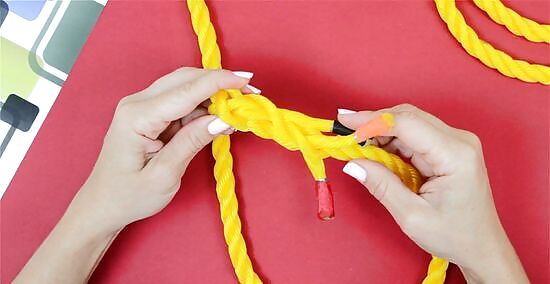
Weave in your final end strand like the first two. Just as you did with the first 2 strands, weave the third and final end strand over the nearest body strand, then under and through the next, pulling it all the way through.
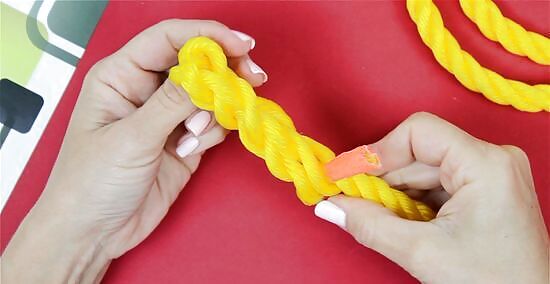
Continue weaving the entire length of your end strands. Working one strand and one tuck at a time, select any end strand and weave over, then under and through the body strands of the rope. Then do another single tuck on the next strand, and so on, until the entire length of each strand is tucked into the rope. Depending on the length of your end strands, you may have to continue this pattern for several twists in the rope until the full length of your end strands is spliced. Pull on the ends of your rope firmly until the weave is solid. Further tighten your spliced rope by rolling it in your hands, feeling the rope squeeze and settle as you do so. Your end-spliced rope is now ready to use!
Short Splice

Unravel the last 6 inches (15 cm) of your ropes. Untwist the very end of your ropes until you have 3 separate strands (on each rope) that are each about 6 inches (15 cm) long. If your ropes are held together with adhesive or are melted together, cut the ends of your ropes free to separate them. If you’re using a rope with more than 3 strands, unravel them, then gather them as evenly as possible into 3 groups, making essentially a 3-strand rope. A short splice is great for joining the ends of 2 different ropes, making for a longer length of rope. That said, avoid using short-spliced ropes as load-bearing ropes. They’re plenty sturdy, but not as ideal as a fully intact rope.
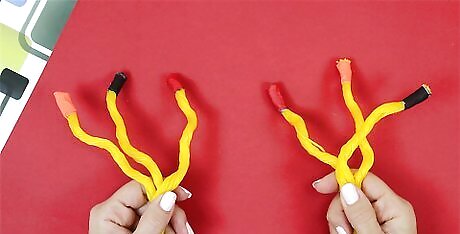
Seal the ends and bases of your strands with tape. Use sturdy tape, like electrical tape, and wrap it around the ends of each strand of the ropes once or twice. This prevents your rope from fraying while working on it. Or, seal the ends of synthetic rope by singing the fibers together with a lighter. Hold the flame to the very end of each strand for a few seconds until the fibers fuse together. Also wrap the tape around the bases of the strands to prevent the ropes from unraveling any further.
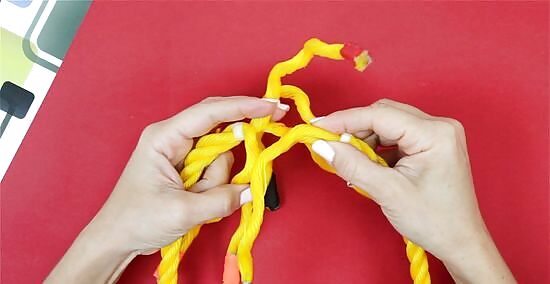
Hold the 2 ropes together at the place where the strands meet. Holding a rope in each hand, position them so that the places where the strands join on each rope are face-to-face, with the strands fanned-out and alternating—a strand from rope A, then from rope B, then from A, etc. Imagine the ropes are two octopi kissing, with their tentacles hugging each other.
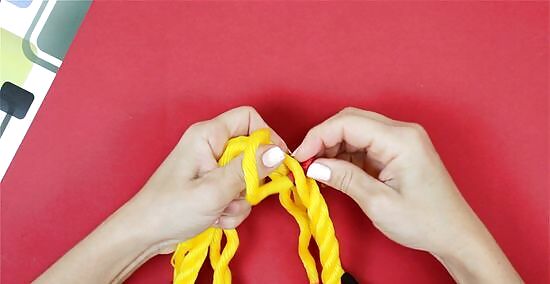
Weave a strand from the left rope into the body of the right rope. Take a strand from the left rope in your hand. Gently loosen the right rope by twisting it against its rotation. Feed the strand from the left rope over the first loosened strand in the right rope’s body, then under and through the very next strand. Pull the strand all the way through so that the ropes are secured together.
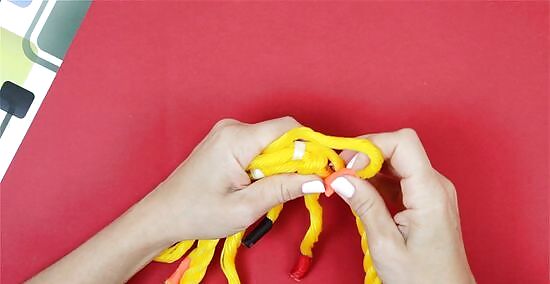
Weave the other 2 strands from the left rope into the right rope. Just as you tucked the first strand, tuck the other 2 strands from the left rope over then under and through the loosened strands of the right rope.

Weave the strands from the right rope into the body of the left rope. Now, repeat the process with the strands of the right rope, tucking them one at a time over, under, and through the loosened body strands of the left rope. Now every strand of either rope has been tucked into the body of the other, joining them together.
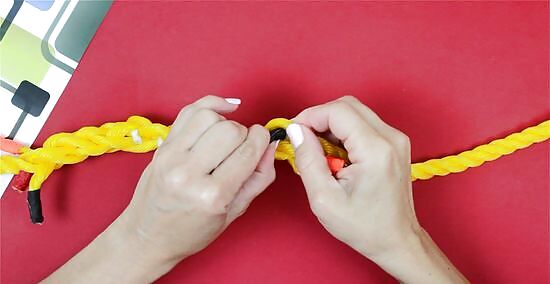
Continue tucking the strands into the other side of the rope. Return to the strands of the left rope and tuck each strand 3 more times into the body of the right rope, then tuck each strand of the right rope into the body of the left, alternating to keep the tension even. Work one tuck at a time, moving to the next strand after each tuck, and cycling through each of the 3, three times Tuck the strands this way until they’re too short to tuck any further, then pull on the ends to tighten them.
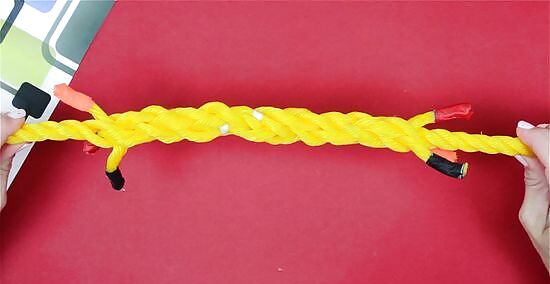
Roll the spliced section of rope between your hands to secure them. Or, roll them underfoot. This tightens the spliced rope and squeezes the strands together, ensuring they’re secure. After the rope is rolled, your splice is finished.



















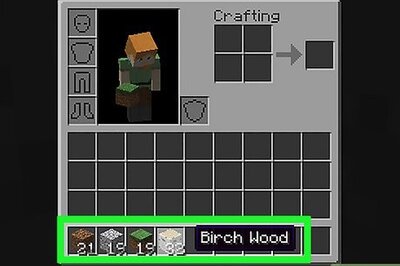
Comments
0 comment